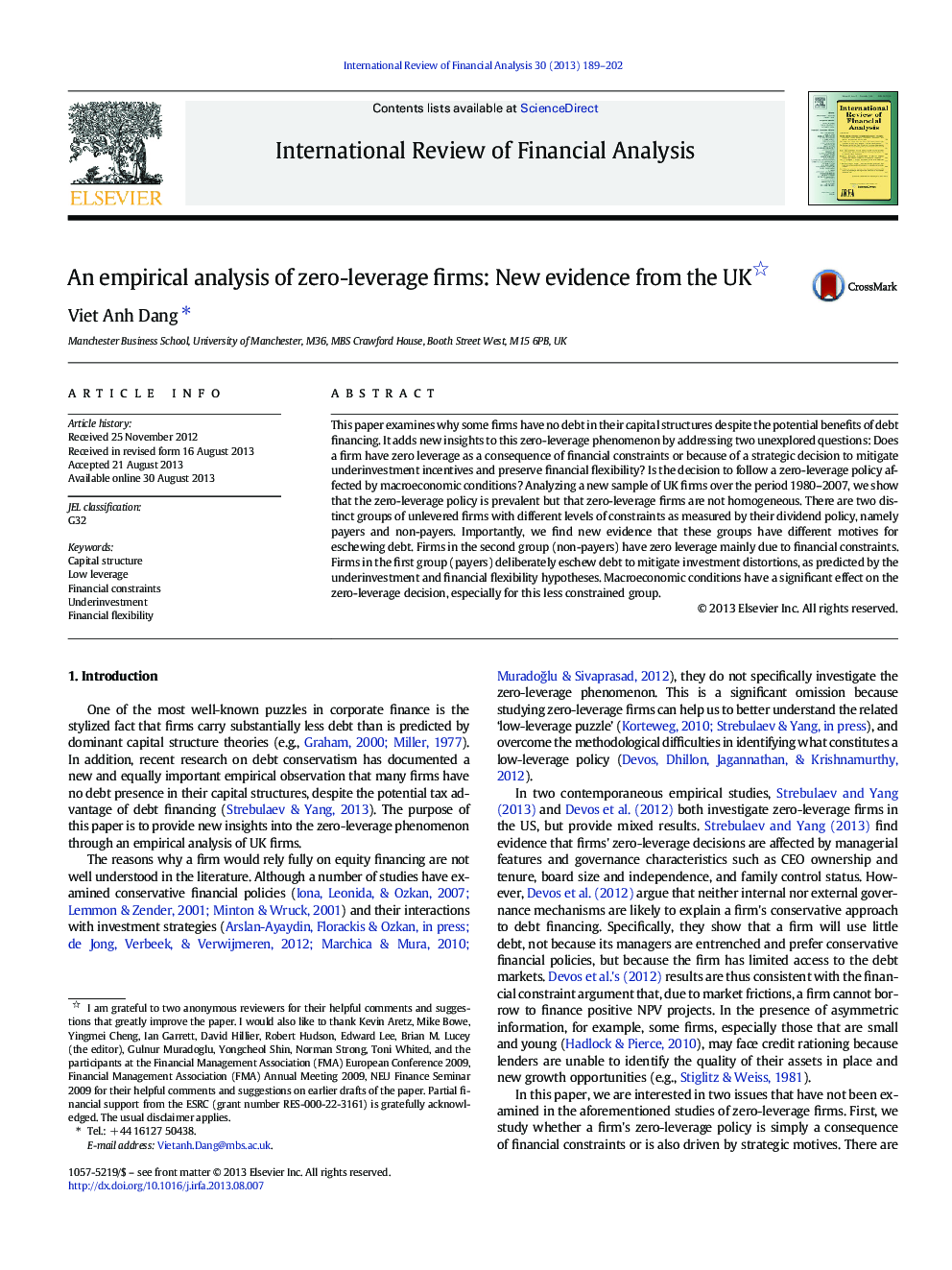| Article ID | Journal | Published Year | Pages | File Type |
|---|---|---|---|---|
| 5084953 | International Review of Financial Analysis | 2013 | 14 Pages |
Abstract
This paper examines why some firms have no debt in their capital structures despite the potential benefits of debt financing. It adds new insights to this zero-leverage phenomenon by addressing two unexplored questions: Does a firm have zero leverage as a consequence of financial constraints or because of a strategic decision to mitigate underinvestment incentives and preserve financial flexibility? Is the decision to follow a zero-leverage policy affected by macroeconomic conditions? Analyzing a new sample of UK firms over the period 1980-2007, we show that the zero-leverage policy is prevalent but that zero-leverage firms are not homogeneous. There are two distinct groups of unlevered firms with different levels of constraints as measured by their dividend policy, namely payers and non-payers. Importantly, we find new evidence that these groups have different motives for eschewing debt. Firms in the second group (non-payers) have zero leverage mainly due to financial constraints. Firms in the first group (payers) deliberately eschew debt to mitigate investment distortions, as predicted by the underinvestment and financial flexibility hypotheses. Macroeconomic conditions have a significant effect on the zero-leverage decision, especially for this less constrained group.
Related Topics
Social Sciences and Humanities
Economics, Econometrics and Finance
Economics and Econometrics
Authors
Viet Anh Dang,
